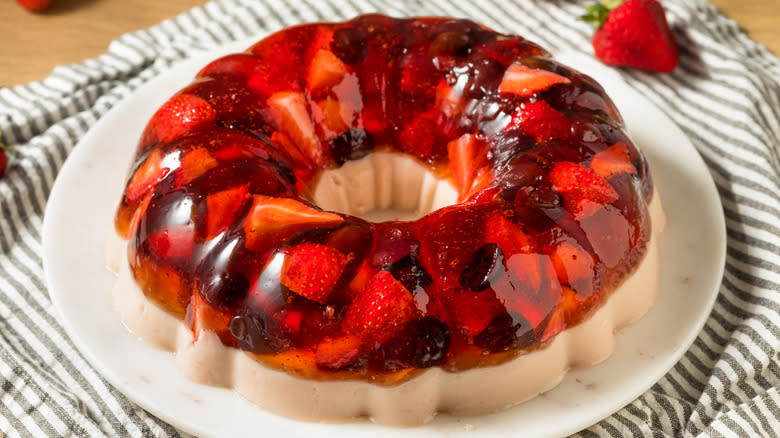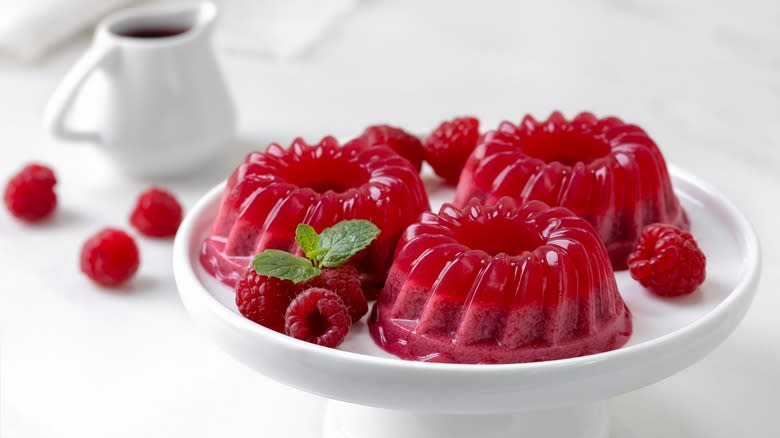Why You Should Avoid Using Fresh Fruit When Making A Jell-O Mold

Jell-O molds are a timeless dessert, often evoking memories of family gatherings and festive occasions. They're simple, versatile, and visually appealing. But when it comes to incorporating fresh fruit into Jell-O molds, one must tread cautiously. The key issue lies in the science of how Jell-O sets and how certain fruits can disrupt this process.
The main component of Jell-O is gelatin, a substance derived from collagen, which is a protein found in animal bones, cartilage, and skin. Gelatin has the unique ability to form a semi-solid structure when dissolved in water and then cooled. This process is central to achieving the iconic, wobbly consistency of Jell-O. However, incorporating certain fresh fruits can interfere with this setting process due to the presence of protease enzymes (bromelain in pineapple is likely the most familiar of these).
Fruits such as pineapple, kiwi, mango, papaya, guava, and figs contain these natural enzymes that can break down proteins. In the context of Jell-O, these enzymes attack the protein strands in gelatin, preventing them from forming the mesh-like structure necessary for the Jell-O to set. As a result, instead of a firm, sliceable dessert, you're left with a watery mixture. The good news is that there are ways to include fruit without ruining the Jell-O -- one of these being the use of canned fruits.
Read more: 13 Simple Tricks To Pick The Best Fresh Fruit Every Time
Perfecting Your Fruity Jell-O Mold With Canned Fruits

So, how can you enjoy the best of both worlds — a firm Jell-O mold with the delight of fruit inclusions? The first and perhaps easiest solution is to use canned fruits. Canned fruits have been heated during processing, which breaks down the enzymes, rendering them inactive and thus harmless to the gelatin. Furthermore, these fruits come in a syrup or juice that can add extra flavor to your Jell-O mold. Alternatively, you can cook the fruits first to deactivate the enzymes by simply simmering them for a few minutes before adding them to the Jell-O mix.
If you're set on using only fresh fruits, the trick lies in choosing the types that don't contain the problematic enzymes; safe fruits include berries, apples, citrus fruits, and peaches. Meanwhile, for the non-safe options, there are creative ways to include them without disrupting the dessert's structure.
One way is to let the Jell-O set completely before arranging the fresh slices of pineapple, kiwi, or papaya on top like a garnish. Another option is to create a fruit sauce by blending the fruit, then once your Jell-O mold is set and ready to serve, drizzle this sauce over the top. These approaches let you enjoy the fresh texture and flavor of these fruits without risking the integrity of the Jell-O.
Read the original article on Tasting Table.

